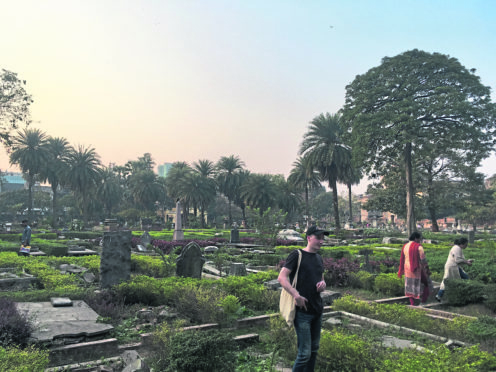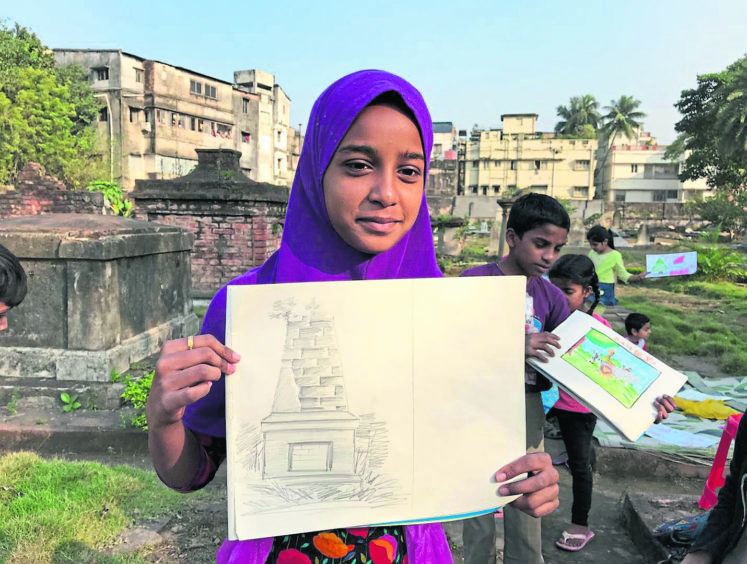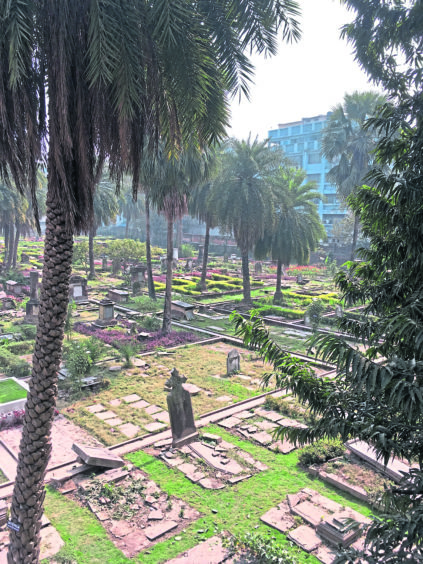A descendant of King Robert the Bruce had spoken of the remarkable progress being made to restore a Scottish cemetery in the heart of Kolkata.
And Lord Bruce, who has just returned from a trip to the Indian city has revealed that the project, which is run by the Kolkata Scottish Heritage Trust, a Scottish registered charity of which he is chairman, has led to the creation of a new Saturday school, which now has 80 pupils whose lives are being transformed.
Kolkata, or Calcutta as it used to be called, was the headquarters of the East India Company in the 18th century and the capital of India until 1911.
>> Keep up to date with the latest news with The P&J newsletter
Lord Bruce’s ancestor, the 8th Earl of Elgin, was the first Viceroy of India to be appointed by the Crown.
However, a decade ago, the cemetery, which has more than 1,600 headstones and monuments, some created from Aberdeen granite, had turned into a jungle, with 30-ft-high trees enveloping the consecrated ground.
It was at that point the Kolkata Scottish Heritage Trust decided it was essential to work on repairing the land and the gravestones, and conduct research into the extensive site to better understand its importance and history.
And, ever since the trust was established in 2008, the results have not only created a “green lung” in the sprawling city, but created employment for local people and has been the catalyst for the sharing of ideas and information between India and Scotland.
Charles Bruce told the Press and Journal: “We have looked into such areas as conservation, landscaping and the launch of a community programme, and it has been a transformational scheme.
“I was in Kolkata last week and it was heartwarming to see the progress which has been made, both in the cemetery and around the city.
“The work which has been done has brought a green lung to a city where the population is soaring.
“There was a big Scottish presence in the city throughout the colonial days, but it virtually disappeared in the 1950s.
“And yet there are over 4,000 people buried in the Scottish Cemetery and well over 90% of them are recognisably Scottish – with names such as Anderson, McGregor, Campbell and Ross.
“At the outset, the place looked like a jungle. But we have employed more than 30 people at the site under the direction of a leading conservation architect, Dr Neeta Das.
“The project team is highly skilled and incorporates ground engineering, landscape design, horticulture, stone carving, plastering and brick-laying, and community outreach.”
Mr Bruce said the site was no longer just a cemetery, but a garden now as well, with 300 trees and flowering shrubs planted.
He added: “Indeed, the entire local community surrounding the site, led by the children at the Saturday school, recently celebrated India’s independence [in 1947] within the site, which was remarkable, when you think about it.
“This isn’t just about us travelling to India. Some of the people on the project have come to Scotland to attend specialist training courses.
“Now, conservation techniques learned in Fife and Edinburgh are being refined halfway across the world and applied throughout South Asia.
“Our project architect is also restoring a temple in Nepal. It is the past and the present in the same space.”
The project will continue its work in the future.


